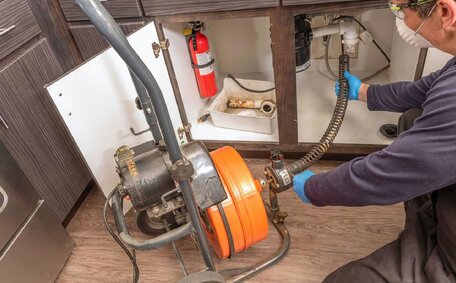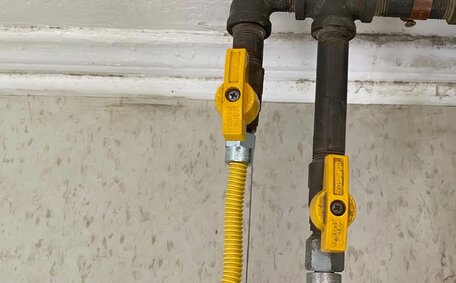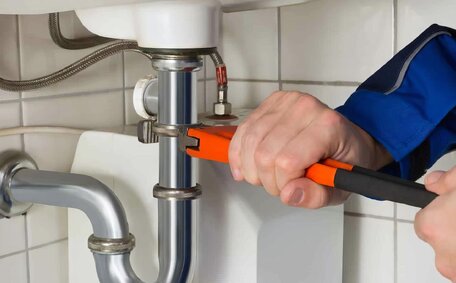Introduction to Gas Fitting
Plumbing gas fitting is a crucial service within the plumbing industry, involving the installation, maintenance and repair of gas lines and appliances. As gas appliances and systems can pose serious safety risks if not handled correctly, gas fitting requires specialised training and the use of proper protective gear and equipment.
Here at Abbotsbury Plumbing located in Abbotsbury, Sydney, our team of licenced gas fitters have the expertise and tools needed to safely and effectively carry out all types of residential and commercial gas fitting jobs.
Whether installing a new gas cooktop or investigating and repairing a gas leak, we follow strict safety procedures and industry best practises.
Having the right tools is especially important for ensuring your job in gas fitting is done effectively. The following sections will provide an overview of the key equipment and tools used in different gas fitting applications. Understanding the proper selection and use of gas and hose fitting gear is the first step in carrying out safe and successful gas jobs.
Common Hand Tools Used in Gas Fitting
Gas fitters rely on an array of specialised hand tools to safely carry out installations, repairs and maintenance. Some key gas fitting hand tools include:
Adjustable Spanners
Adjustable spanners, sometimes called crescent wrenches, are used for loosening and tightening fittings. Their adjustable jaws allow gas fitters to grip a range of fittings sizes.
Pipe Wrenches
Pipe wrenches are essential for assembling and disassembling gas pipe joints and connections. Their strong serrated jaws provide maximum grip.
Screwdrivers
Standard and Phillips head screwdrivers are basic necessities for gas fitters. They are used for tightening and removing screws to access fittings and appliances.
Tubing Cutters
Tubing cutters with rollers and cutting wheels are used to accurately size and cut copper pipes and tubes to length.
Flare Nut Wrenches
Flare nut wrenches have rounded jaws that securely grip the hex edges of flare fittings without damaging the soft flared end.
Understanding when and how to use these everyday gas fitting tools appropriately allows technicians like our team at Abbotsbury Plumbing to carry out safe and compliant gas jobs in homes and businesses across Abbotsbury, Sydney.
Wrenches
Wrenches are a gas fitter’s best friend when it comes to assembling and tightening gas connections. Several types of wrenches are commonly used:
Open-End Wrenches
Open-end wrenches have parallel jaws with openings at each end to grip nuts and fittings. They allow technicians to apply torque when tightening or loosening connections in tight spaces.
Flare nut wrenches have rounded jaws that grip the edges of flare fittings without causing damage. They provide a solid hold on flared copper tubing connections.
Pipe wrenches like Stillsons are a gas fitting necessity. Their strong serrated teeth allow users to really cinch down on rounded pipes and fittings to assemble or disassemble connections.
Properly using wrenches is critical for leak-proof connections.
Technicians must make sure wrenches fit correctly around fittings without stripping them. We observe manufacturer torque specifications and work carefully when forcing tightened connections apart. Having the right wrenches at hand makes jobs safer and more efficient.
Cutters
Precise and efficient cutting of pipes is critical in gas fitting. Two key tools used are tube cutters and hacksaws.
Tube Cutters
Tube cutters are designed specifically for cutting copper pipes and tubing to accurate lengths. They consist of a sharp cutting wheel, chain, tightening screw and frame. Gas fitters carefully size and mark tubing, fit tube cutters over it, then tighten the chain while turning the tool to make a clean rotating cut without deformation.
Hacksaws
For cutting steel pipe, gas fitters rely on hacksaws with blades designed for cutting metal. Hacksaw blades have fine teeth to cut efficiently through rigid steel gas pipe offcuts. The pipe must be properly secured, allowing the technician to saw through using smooth strokes.
Keeping these cutting tools sharp and lubricated ensures precise, non-jagged cuts and reduces work accidents. Proper tube and pipe cutting helps gas fitters assemble secure your gas fitting systems.
Other Hand Tools
the key tools already covered, gas fitters utilise various other specialised hand tools for routine tasks:
Pliers
Needle-nose and multipurpose pliers allow technicians to get a solid grip, hold fittings, pull cables through conduits, twist wires together for testing and much more.
Pipe Reamers
Pipe reamers have sharp rotating blades that smoothly remove burrs and bevel the cut ends of metal pipe. This prevents damage to fittings and facilitates the joining process.
Deburring Tools
Similar to reamers, hand deburring tools scrape and file down sharp edges around copper tubing cuts. Proper deburring provides smooth, non-abrasive tube ends for push-fit connections.
Pipe Brushes
Stiff wire brushes help clean the interiors of pipes prior to assembly, preventing contaminants from compromising the system.
Pipe Joint Compound
Pipe joint compounds/thread sealants are applied to the threads of some metallic joint configurations to enhance seal performance.
This list highlights additional indispensable gas fitting instruments. Well-maintained tools in the hands of qualified technicians like the team at Abbotsbury Plumbing keep homes and businesses safe.
Power Tools for Efficiency
While hand tools cover basic gas fitting applications, power tools allow technicians to work more efficiently on challenging jobs.
Angle Grinders
Angle grinders rapidly and smoothly cut pipes to length for efficient out gas system preparation. Their abrasive discs make neat straight cuts through steel tubing. Grinders save significant installation time, especially in out gas fitting tasks, compared to hand hacksawing.
Power Drills
Power drills fit a wide range of drill bits for drilling holes through structural elements when running gas supply pipes. They provide consistency, speed and reduce physical strain compared to hammer drills.
Press Tools
Press tools utilise compressed air or hydraulic pressure to reliably join fittings. They provide the calibrated force required to correctly mate components like copper push fittings.
While power tools boost efficiency, plumbers gas specialists must handle them with care due to high cutting speeds and force. At Abbotsbury Plumbing, our gas fitters complete rigorous training to properly and safely operate all equipment.
Gas Leak Detection Equipment
Detecting gas leaks is a critical aspect to ensure your gas fitting job maintains the highest safety standards. Gas fitters utilise specialised equipment to identify leaks before proceeding with tasks, ensuring gas safety:
Gas Detectors
Electronic gas detectors precisely sniff out leaks by sensing target gases like natural gas or LPG. Portable detectors feature audio/visual alarms that activate when gas is detected, helping technicians pinpoint leak locations.
Gas Detection Fluid
Bubble-based fluid is manually applied to connections and components during testing. Bubbling indicates a leak is present. Though less precise than electronic detectors, the fluid finds leaks efficiently.
Pressure Testing Tools
Devices like manometers use negative pressure testing to uncover leaks in gas systems after installation or modification, meeting regulations like AS 4575. Pressure changes over time signal leakage.
Combustion and Carbon Monoxide Testers
Flue gas analysers measure carbon monoxide, allowing technicians to confirm safe and complete gas appliancecombustion and check for spillage as per Type A appliance standards.
mandatory leakage testing, the leak detection gear used by our Abbotsbury Plumbing team provides an extra level of safety assurance for every gas job.
Pipes, Fittings and Connectors
Selecting suitable pipes, fittings and connectors is imperative for creating safe, long-lasting gas systems. There are a few key material options gas fitters choose from:
Steel Piping
Black iron piping consisting of galvanised steel coated with protective zinc is commonly used for distributing gas in residential and commercial settings. Steel stands up to pressure, resists corrosion and conforms to standards like AS 5601.
Copper Tubing
Type B lightweight, corrosion-resistant copper tubing is the material of choice for the last stage supply lines running directly to gas appliances in homes and businesses. Copper is easily worked compared to steel.
Fittings and Connectors
Fittings like elbows, tees and reducers route gas pipes, while connectors like compression fittings, flares, threaded connectors and push-fits joint piping materials. Connectors must meet safety certifications and be matched to piping materials.
Our team at Abbotsbury Plumbing leverages our expertise to evaluate service requirements, properties of materials and compliance factors to optimally design safe gas systems for all environments using compatible quality pipes, fittings and connectors.
Safety Gear and Precautions
Working with gas systems poses significant risks that require adequate precautions and protective gear. Gas fitters are legally obligated under regulations like AS 4575 Gas Installations to utilise equipment guarding against dangers including:
Fire and Heat
Nomex overalls, jackets and trousers shield skin from flames and heat. Leather rig gloves offer hand protection when handling hot elements.
Eye Hazards
Gas cutting/brazing with equipment like a welding hose produces UV rays, sparks and flying debris. Full face shields, protective glasses and welding helmets safeguard eyes and face.
Fume Inhalation
Respirator masks with gas/particle filters prevent inhaling toxic fumes when working around solvents or in confined spaces lacking ventilation.
Hearing Damage
Earplugs/earmuffs block equipment noise exceeding safe decibel limits from tools like angle grinders. This prevents long-term hearing problems.
Steel-toed boots resist falling object impacts while hard hats shield from overhead hazards on extensive jobsites. Abbotsbury Plumbing technicians undergo certified training to properly suit up with protective gear for all tasks ensuring personal and public safety.
Advanced Tools and Emerging Technologies
The gas fitting industry continues to evolve with new digital tools and advanced equipment that allow for more efficient, precise and safe gas jobs. Abbotsbury Plumbing stays ahead of the curve by implementing emerging technologies in our services, including:
Digital Manifolds
Digital manifolds like the Testo 550 kit replace mechanical gauges with precise electronic pressure sensors linked to digital displays. They allow for accurate real-time quantitative leak rate measurement rather than estimation.
Video Inspection Cameras
Flexible waterproof video inspection cameras provide visual access inside pipes. They help identify leak sources, blockages, pipe condition issues and more while reducing invasive demolition.
Robotic Pipeline Coating
Emerging robotic equipment applies protective anti-corrosion epoxy coatings to the interior walls of pipelines. This provides enhanced longevity and chemical resistance without needing major pipe replacement.
Metal 3D Printing
3D metal printing technology allows for on-demand fabrication of custom pipes, fittings and connectors optimised for specific gas system requirements and configurations.
By actively adopting the newest gas fitting tech innovations as they emerge, Abbotsbury Plumbing enhances services and safety for all residential and commercial customers throughout the Abbotsbury region.
Maintenance and Servicing Equipment
Regular maintenance and servicing by a qualified plumber gas specialist are crucial for ensuring gas systems operate safely and efficiently over their lengthy service lives. Gas fitters utilise specialised equipment when carrying out inspections and tune-ups:
Electronic Gas Leak Detectors
High-sensitivity electronic gas detectors can also check for leaks during annual servicing. They verify leak tightness even in minute concentrations.
Combustion Analysers
Flue gas analysers measure CO and combustion efficiency during scheduled appliance tune-ups in compliance with AS 4575/AG 601 standards.
Manifolds and Gauges
Digital manifolds with pressure gauges they also test control valve and burner regulator performance against appliance specifications.
Flow Measurement Instruments
Rotameters and turbine gas metres analyse flow rates and consumption for usage monitoring and anomaly detection.
The maintenance gear used by our Abbotsbury Plumbing team can help keep gas systems running safely and identify any issues before they become problematic. We recommend all customers in Abbotsbury, Sydney take advantage of our gas servicing plans for peace of mind.






